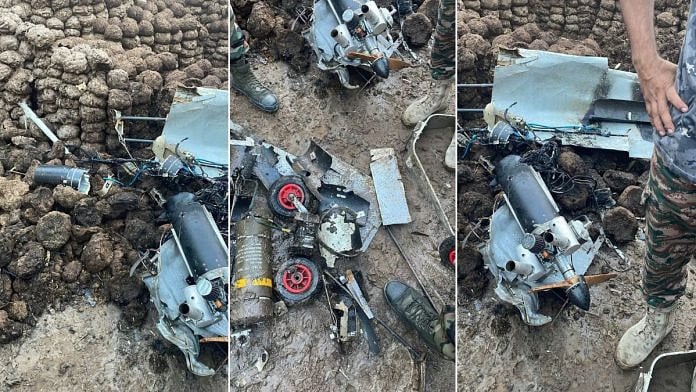During the intense military standoff known as Operation Sindoor, Indian forces successfully thwarted 413 drone attacks targeting Rajasthan, marking one of the largest aerial defense efforts in the region’s recent history. The operation, which began on May 7, 2025, was launched in response to a deadly terror strike in Pahalgam, Jammu and Kashmir, on April 22 that left 26 civilians dead and significantly escalated tensions with Pakistan.
Throughout the conflict, Pakistan launched coordinated aerial attacks on strategic Indian military installations across the northern and western sectors, with particular focus on key air bases in Rajasthan including Phalodi, Barmer, Jaisalmer, Bikaner, and Sri Ganganagar. Other regions targeted included Jammu, Srinagar, Pathankot, Amritsar, Ludhiana, and Bhuj. Despite this expansive offensive, India’s air defense network, anchored by the Russian-made S-400 missile systems, neutralized all incoming threats without any reported damage to infrastructure or loss of civilian lives.
The S-400 system, capable of detecting aerial threats up to 600 kilometers and intercepting them within 400 kilometers, played a central role in India’s successful defense. Strategic deployment of these systems in Rajasthan and Gujarat allowed the Indian Armed Forces to maintain complete aerial dominance throughout the conflict.
Air Marshal AK Bharti, Director General of Air Operations, commended the coordinated response, stating, “Our defenses stood like a wall. Whether it was Turkish drones, Chinese projectiles, or Pakistani planes, they could not breach our technology.” The operation was also bolstered by significant support from the Indian Space Research Organisation (ISRO), which utilized both indigenous and international commercial satellites to track and analyze threats in real-time.
As part of its retaliatory campaign, India carried out precision strikes on nine terrorist infrastructure targets in Pakistan and Pakistan-occupied Kashmir (PoK). Independent analysis by international media outlets later confirmed visible damage to six Pakistani airfields, including Mushaf and Bholari, although the runways remained partially operational.
Pakistan’s response included aerial strikes on 26 Indian sites, but due to India’s comprehensive early warning and interception capabilities, none resulted in significant damage. In Rajasthan, local authorities and the Border Security Force (BSF) maintained heightened vigilance, particularly at the Phalodi air base. A major incident was averted in Jaisalmer when a live explosive, reportedly dropped by a Pakistani drone, was successfully defused by the Army’s bomb disposal squad.
Prime Minister Narendra Modi described Operation Sindoor as a “measured and calibrated” response to Pakistan-based terrorist aggression, specifically naming Lashkar-e-Taiba as the group behind the Pahalgam attack. The Indian government’s handling of the conflict received international backing, including public support from a former U.S. ambassador to the United Nations who defended India’s right to retaliate in self-defense.
Operation Sindoor underscored India’s evolving capabilities in aerial defense and technological integration, demonstrating a significant shift in modern warfare tactics. The seamless coordination between armed forces, space agencies, and local authorities has been cited as a key reason for the operation’s success. As tensions in the region continue to simmer, the Indian military remains on high alert, with sustained focus on countering drone warfare and enhancing cross-domain operational readiness.













